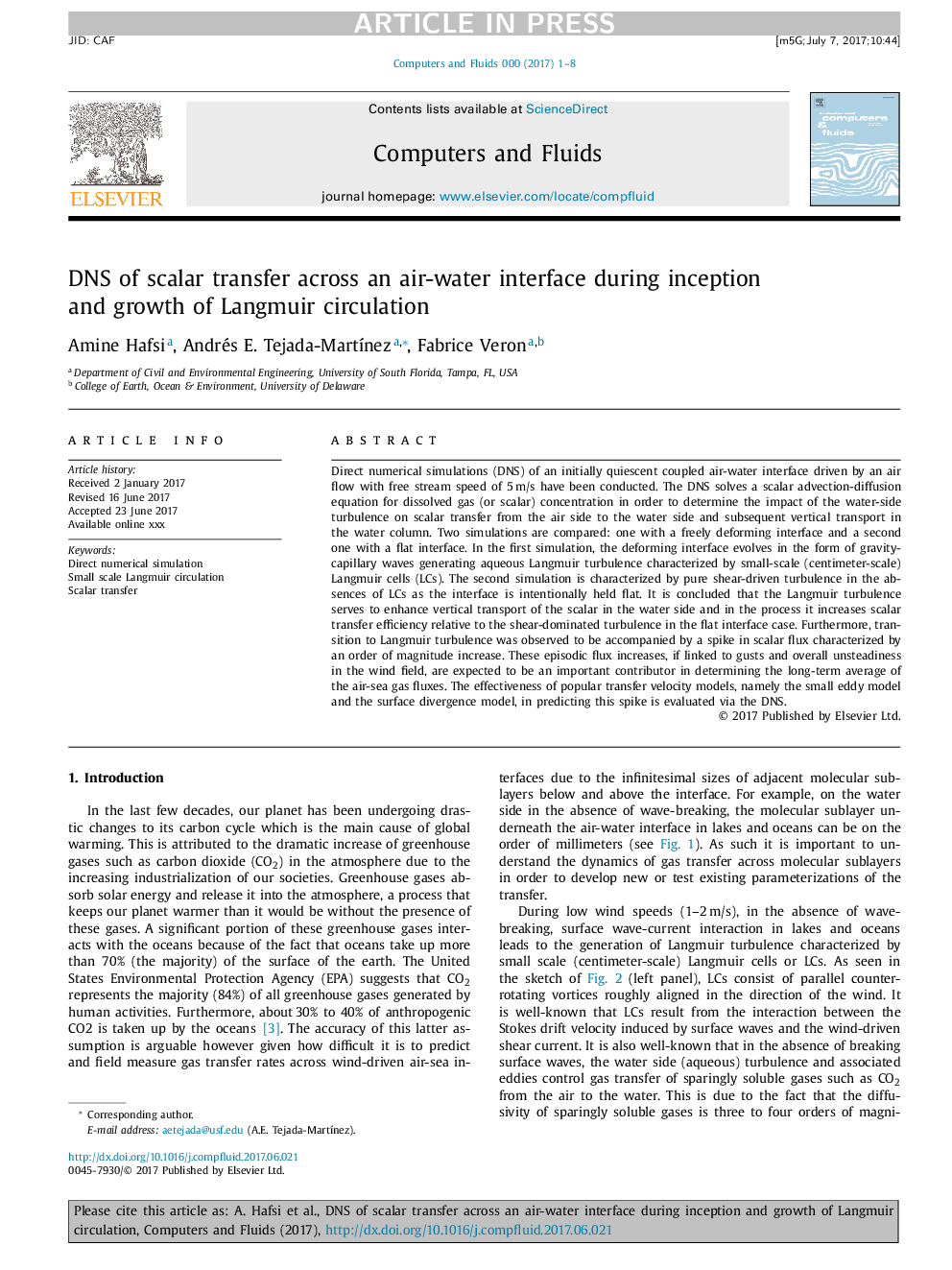| کد مقاله | کد نشریه | سال انتشار | مقاله انگلیسی | نسخه تمام متن |
|---|---|---|---|---|
| 7156573 | 1462653 | 2017 | 8 صفحه PDF | دانلود رایگان |
عنوان انگلیسی مقاله ISI
DNS of scalar transfer across an air-water interface during inception and growth of Langmuir circulation
دانلود مقاله + سفارش ترجمه
دانلود مقاله ISI انگلیسی
رایگان برای ایرانیان
موضوعات مرتبط
مهندسی و علوم پایه
سایر رشته های مهندسی
مکانیک محاسباتی
پیش نمایش صفحه اول مقاله

چکیده انگلیسی
Direct numerical simulations (DNS) of an initially quiescent coupled air-water interface driven by an air flow with free stream speed of 5â¯m/s have been conducted. The DNS solves a scalar advection-diffusion equation for dissolved gas (or scalar) concentration in order to determine the impact of the water-side turbulence on scalar transfer from the air side to the water side and subsequent vertical transport in the water column. Two simulations are compared: one with a freely deforming interface and a second one with a flat interface. In the first simulation, the deforming interface evolves in the form of gravity-capillary waves generating aqueous Langmuir turbulence characterized by small-scale (centimeter-scale) Langmuir cells (LCs). The second simulation is characterized by pure shear-driven turbulence in the absences of LCs as the interface is intentionally held flat. It is concluded that the Langmuir turbulence serves to enhance vertical transport of the scalar in the water side and in the process it increases scalar transfer efficiency relative to the shear-dominated turbulence in the flat interface case. Furthermore, transition to Langmuir turbulence was observed to be accompanied by a spike in scalar flux characterized by an order of magnitude increase. These episodic flux increases, if linked to gusts and overall unsteadiness in the wind field, are expected to be an important contributor in determining the long-term average of the air-sea gas fluxes. The effectiveness of popular transfer velocity models, namely the small eddy model and the surface divergence model, in predicting this spike is evaluated via the DNS.
ناشر
Database: Elsevier - ScienceDirect (ساینس دایرکت)
Journal: Computers & Fluids - Volume 158, 24 November 2017, Pages 49-56
Journal: Computers & Fluids - Volume 158, 24 November 2017, Pages 49-56
نویسندگان
Amine Hafsi, Andrés E. Tejada-MartÃnez, Fabrice Veron,